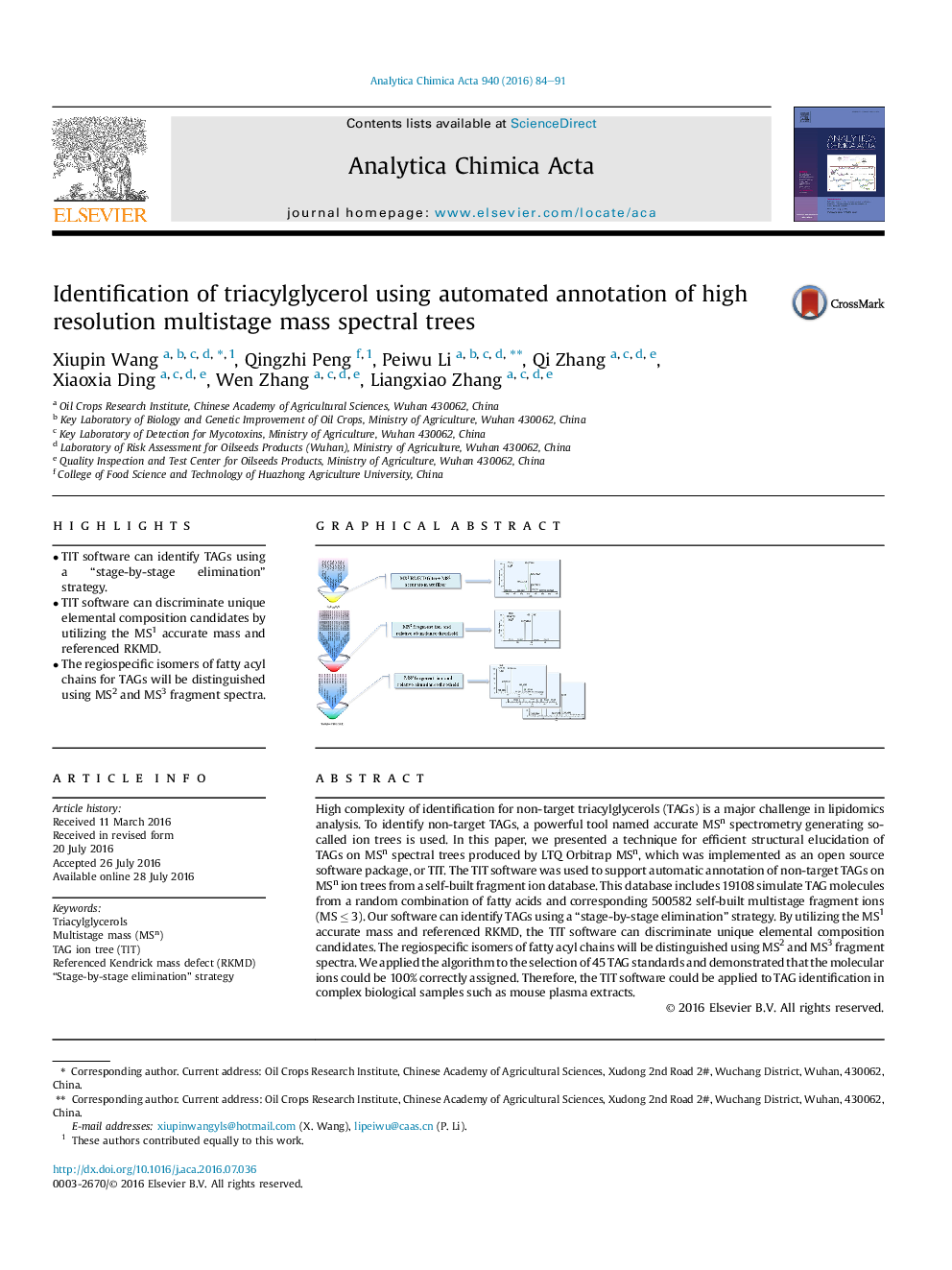| کد مقاله | کد نشریه | سال انتشار | مقاله انگلیسی | نسخه تمام متن |
|---|---|---|---|---|
| 5131256 | 1490892 | 2016 | 8 صفحه PDF | دانلود رایگان |
- TIT software can identify TAGs using a “stage-by-stage elimination” strategy.
- TIT software can discriminate unique elemental composition candidates by utilizing the MS1 accurate mass and referenced RKMD.
- The regiospecific isomers of fatty acyl chains for TAGs will be distinguished using MS2 and MS3 fragment spectra.
High complexity of identification for non-target triacylglycerols (TAGs) is a major challenge in lipidomics analysis. To identify non-target TAGs, a powerful tool named accurate MSn spectrometry generating so-called ion trees is used. In this paper, we presented a technique for efficient structural elucidation of TAGs on MSn spectral trees produced by LTQ Orbitrap MSn, which was implemented as an open source software package, or TIT. The TIT software was used to support automatic annotation of non-target TAGs on MSn ion trees from a self-built fragment ion database. This database includes 19108 simulate TAG molecules from a random combination of fatty acids and corresponding 500582 self-built multistage fragment ions (MS â¤Â 3). Our software can identify TAGs using a “stage-by-stage elimination” strategy. By utilizing the MS1 accurate mass and referenced RKMD, the TIT software can discriminate unique elemental composition candidates. The regiospecific isomers of fatty acyl chains will be distinguished using MS2 and MS3 fragment spectra. We applied the algorithm to the selection of 45 TAG standards and demonstrated that the molecular ions could be 100% correctly assigned. Therefore, the TIT software could be applied to TAG identification in complex biological samples such as mouse plasma extracts.
Journal: Analytica Chimica Acta - Volume 940, 12 October 2016, Pages 84-91
